TOP 5 materials for chimneys, or Which chimney to choose
The primary function of the chimney is the removal of combustion products from the furnace to the outside, but its role in the process of fuel combustion and the formation of draft cannot be underestimated. Experts say that with the right choice of material for the chimney pipe and its proper installation, the heat transfer of the furnace or boiler can be increased to 10-15%. However for gas or solid fuel boiler, fireplace and the stove will need a chimney not only of different heights and diameters, but also material. If previously you chose only between brick and non-galvanized metal, today the range of suitable options is much wider. We figure out what materials for the chimney, more precisely chimney pipes, exist, for what conditions they are intended, and which chimney to choose depending on the type fuel used.
What to consider when choosing a material for the chimney?
The chimney is complicated construction consisting of a vertical pipe, an umbrella for protection against precipitation, a viewing window for maintenance, a drip tray for collecting condensate and other elements. The vertical pipe is considered the main part of the chimney, and the safety and efficiency of operation depend on it. furnace or boiler.
To choose the right chimney material, you must clearly understand what fuel will be used: natural gas, diesel fuel, coal, firewood, peat or sawdust. Each of them has a different combustion temperature, temperature and composition of the exhaust gases. Therefore, when selecting material for the chimney, such parameters are taken into account:
- flue gas temperature. Naturally, the material must withstand slightly higher temperatures than those characteristic of the outgoing gases;
- corrosion resistance. When some types of fuel are burned, sulfuric and hydrochloric acid vapors are formed, which not every material can withstand. The more sulfur in the fuel composition, the more resistant to the effects of sulfur compounds should be the material. According to this parameter, chimneys divided into three classes: the first - for the removal of gas combustion products, the second - firewood and liquid fuels with a sulfur content of up to 0.2%, the third - for coal, peat, diesel fuel;
- the presence of condensate in the chimney;
- gas pressure in the chimney. There are designs designed to work under natural traction, and there are those that are designed to work with supercharged boilers;
- resistance to soot fire. The temperature in the chimney when igniting soot, if present, can briefly rise to 10000C - not every material can stand it.

From all this it follows that:
- for wood stoves, solid fuel boilers, bath stoves and fireplaces it is necessary to choose a material that withstands an operating temperature of about 7000C and its short-term increase to 10000C. These are brick and less often ceramic chimneys;
- for gas boilers requires a chimney that can withstand temperatures of 2000C with short-term increase to 4000C. Usually metal pipes are used for this purpose;
- for liquid fuel boilers and sawdust you need such material for a chimney that would easily withstand temperatures up to 2500C up to 4000C, and when it comes to diesel fuel, it is also resistant to the hostile environment of the exhaust gases.
Now we will understand the properties of the most popular materials that are used to equip the chimney pipe.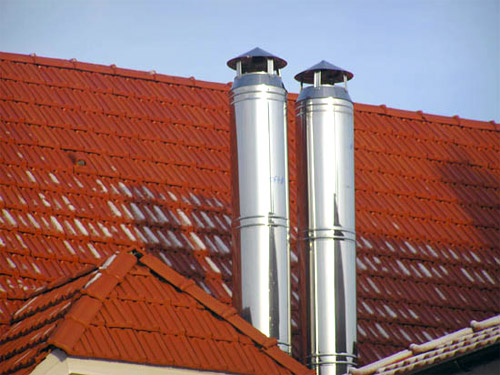
No. 1. Brick chimney pipe
Brick for the installation of chimneys has been used for a long time, and it has already become traditional material. Today it cannot be called universal, which, however, does not reduce its popularity. Brick chimney equip inside the walls of the building, those sections that pass through unheated rooms or outside the building, carefully insulateso that the flue gases do not cool inside. For arranging such a chimney is suitable red solid brick marks not lower than M150, for its masonry use lime or lime-cement mortar.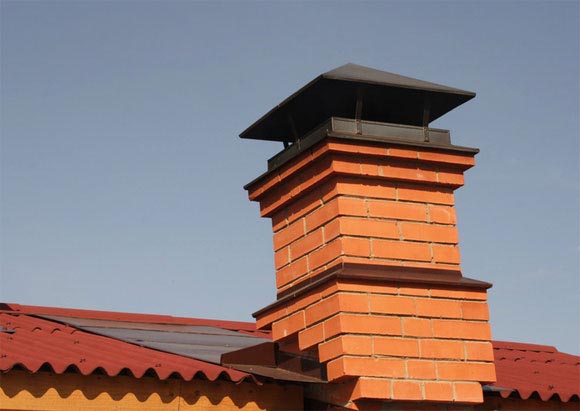
The main advantages of brick pipes for the chimney, their durability and excellent heat resistance (ceramic brick withstands temperatures up to 8000C), and in appearance they look great, and in terms of fire safety they have practically no equal. Brick chimney fits for stoves and fireplaces on wood, and when working with boilers for liquid fuel, gas, pellet and solid fuel pyrolysis boilers, it quickly collapses. The thing is that such boilers are designed in such a way that the exhaust gases have a low temperature. They quickly condense and settle on the walls of the pipe, due to which the latter are constantly moistened. Given the fact that the off-gas contains aggressive chemicals, including sulfuric acid, the brick quickly collapses. The results of this effect are manifested by wet spots on the outer surface of the pipe.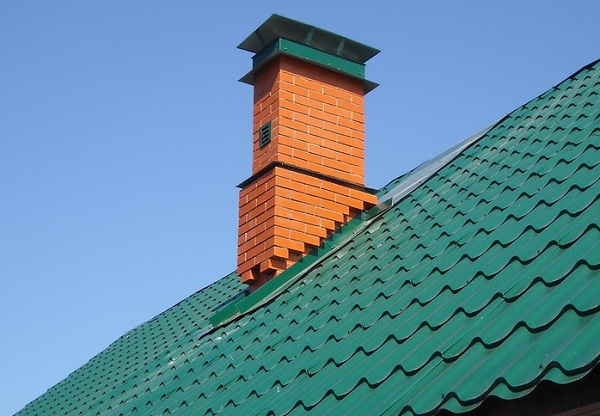
True, there is always a way out of the situation. To connect a modern gas or liquid fuel boiler to a brick chimney pipe, brick channel embed steel or ceramic pipethat have slightly different performance.
Since the surface of the brick is rough, soot settles well on it, which gradually leads to a decrease in traction. Cleaning and repairing a brick pipe is not an easy task. In addition, the large weight of the structure will necessarily require foundation. On the other hand, it is difficult to find a worthy analogue for arranging a chimney of a stove or fireplace.
No. 2. Steel pipe chimney
For gas and solid fuel boilers steel pipes are best suited, but it should be stainless, heat resistant and acid resistant, since sulfur particles, which are present in almost every type of fuel in one or another quantity, when combined with moisture and coal particles form an aggressive environment. Stainless steel capable withstand temperatures up to 5000FROM, pipes with a wall thickness of 0.6 mm are used for chimneys, but for solid fuel boilers it is better to use steel 1 mm thick. Steel pipes represent a whole system of straight sections and various shaped elements, including adapters, bends, tees, etc. Such a system can be mounted independently or be built into an existing brick channel.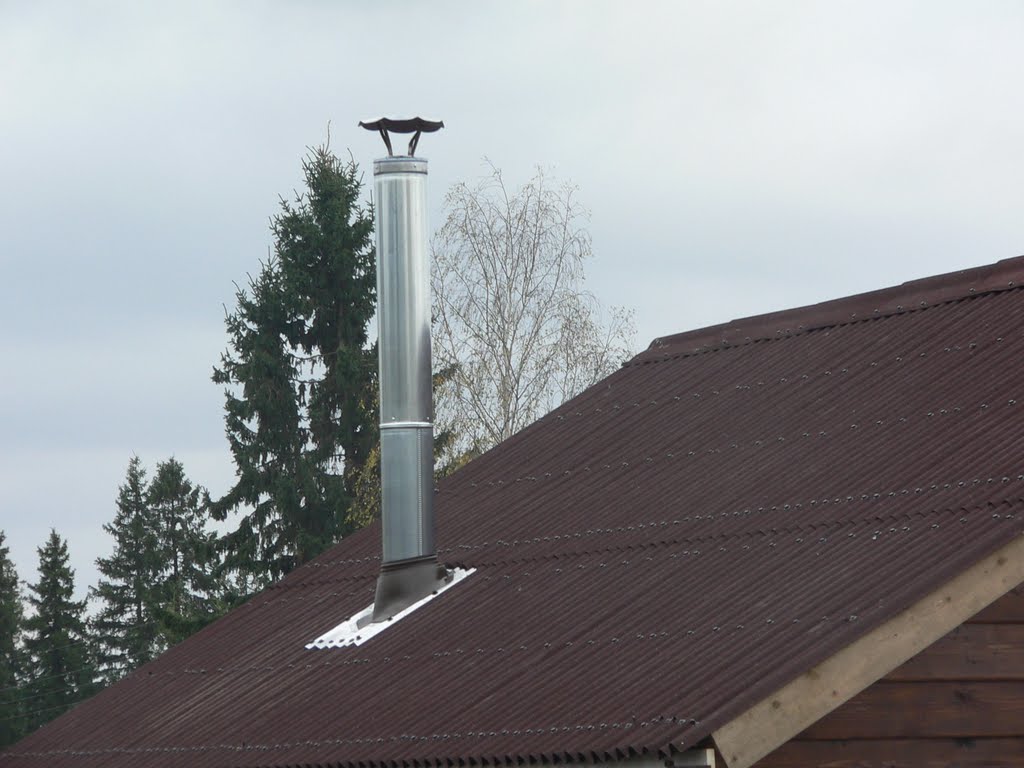
The main advantages of steel pipes:
- simplicity and high speed of installation, because the weight of the structure is small, there is no need for a foundation, and of the finished elements, not even the largest professional will assemble the entire system without problems;
- repair work is not difficult;
- soot particles do not accumulate on smooth walls, their surface is easy to clean, so we can talk about consistently high aerodynamic characteristics for the passage of exhaust gases;
- high corrosion resistance;
- the ability to create complex structures;
- high tightness, due to which you can create a forced hood.
Among the minuses They call it a high cost, especially when compared with a brick or ceramic analogue, but if simplicity and speed of arrangement, light weight and resistance to aggressive environments are important, then it is better to stop the choice on a steel chimney. The disadvantages are sometimes attributed to low heat resistance, but for modern boilers with a slow combustion system, greater heat resistance is unnecessary.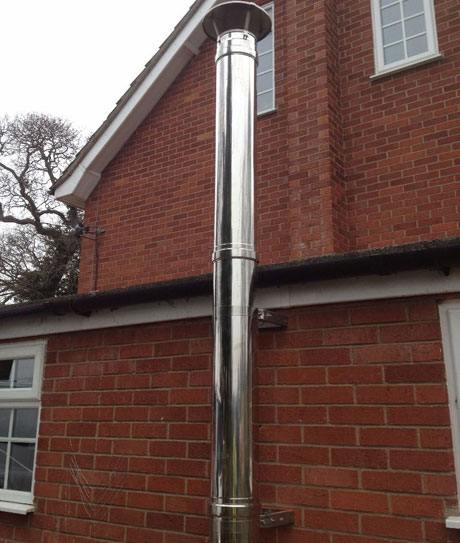
Depending on the characteristics of the room, boiler and climate, use one of the following types of steel chimneys:
- single wall steel pipeconsisting of one layer of stainless steel. This is the easiest and cheapest option, they lay such a chimney in a specially laid vertical channel. Often similar chimneys equip in the bathand the heat leaving the steel pipe is used to heat water;
- single-walled steel pipes for the reconstruction of a brick chimney may have an oval shape. Such a restoration process and adaptation of an existing chimney to work with a gas boiler is called a “sleeve”;

- double-walled sandwich panels, consisting of two steel pipes, in the space between which a layer of insulation is placed (basalt wool) Using the latter allows you to prevent the formation of condensate inside the pipe, while its outer surface is almost not heated. Ease of assembly and excellent performance allow the use of such systems both indoors and outdoors on the wall;

- coaxial steel chimneys They also consist of two pipes placed one in the other, only there is no insulation between them, and the resulting space is designed to supply air to the boiler to maintain combustion. Combustion products are discharged through the inner pipe. Such chimneys do not behave very well in the conditions of severe domestic winters. Cold external air passing through the outer pipe can sometimes cool the inner pipe and the gases flowing through it. This leads to a sharp loss of condensate and its freezing on the surface of the pipe. The chimney is gradually clogged, and the automation, responding to this, turns off the boiler, so in this case it is better to equip the chimneys with two separate pipes.

It is worth noting that sometimes thick pipes made of low alloy steel are used to equip the chimney - this option is usually found in bath stoves. Also, craftsmen sometimes use for the same purpose. cast iron sewer pipes.
No. 3. Ceramic chimney pipe
Ceramic pipes for the chimney are considered the most universal, and among them main advantages:
- durability;
- resistance to aggressive environments and corrosion;
- soot does not linger on the smooth inner surface, making pipe maintenance easier;
- high heat absorbing characteristics;
- resistance to high temperatures. For solid fuel boilers, ceramic pipes are used that can withstand up to 6500C and resistant to a sharp increase in temperature when soot ignites. For gas boilers, pipes withstand up to 450 can be used.0C, designed to work in the wet state and having steam traps.

For the installation of a ceramic chimney, a separate channel is required. The shell is equipped with special concrete blocks with voids. A layer of mineral wool insulation is placed around the pipe to protect adjacent structures from excessive heat and reduce condensation. Both the pipe and the insulation can absorb water, so they need to ensure normal ventilation. It is created due to the presence of vertical air channels between the insulation and concrete blocks. By the way, in concrete blocks there are also channels for placing reinforcement in them. Be sure to reinforce the part of the chimney that faces the street.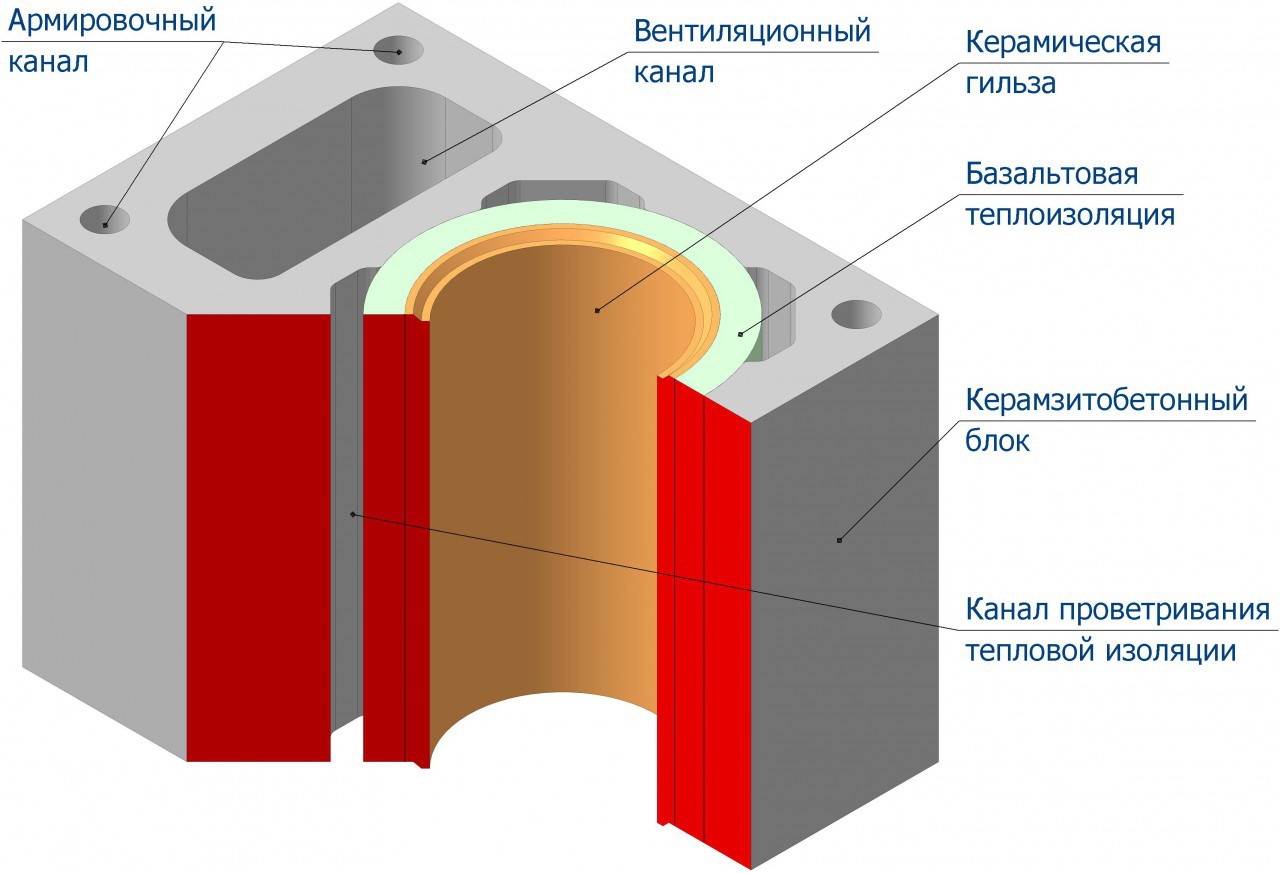
To expand the scope of use of ceramic chimneys, they are produced in steel caseas well as rectangular elements. The former do not require the arrangement of the foundation and the creation of special channels, the latter can be used for the reconstruction of brick chimneys.
Number 4. Chimney from asbestos-cement pipe
A couple of decades ago, asbestos-cement pipes were universally used to equip chimneys. Actually, initially they were not intended for such purposes, which can be easily verified by studying their operational qualities. Of the advantages of the material, only its low price, but disadvantages much bigger:
- material withstands temperatures up to 3000C, and often this is not enough. It is possible to use such a pipe only at the maximum distance from the furnace, where the smoke passes already cooled;
- soot quickly accumulates on a rough surface, which tends to catch fire. But if a brick chimney can easily cope with this, then the chimney from an asbestos-cement pipe can simply explode;
- instability before condensate, which contains aggressive chemicals. Moreover, condensate is able to absorb into the pipe, destroying it and worsening the appearance;
- heavy weight and difficult installation;
- leaky joints.

It is possible to use an asbestos-cement pipe for a chimney only if you are sure that the installation will be carried out correctly, and also subject to regular cleaning of the chimney, but it is better to pay attention to other options.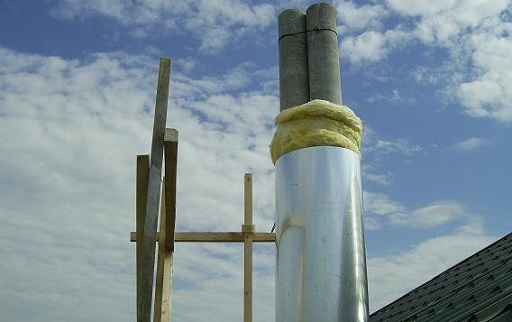
No. 5. Vermiculite pipes for the chimney
Not so long ago, vermiculite chimney pipes appeared on sale. These are stainless steel pipes coated inside with a layer of vermiculite mineral 5 cm thick. This mineral has low thermal conductivity, therefore, in fact, it is a natural heat insulator. Moreover, vermiculite is absolutely inert to aggressive combustion products.
Among the others the benefits vermiculite pipes high durability, relative ease of installation, no need for insulation of the chimney. Main disadvantage lies in the ability to accumulate soot, so you will have to clean the chimney often.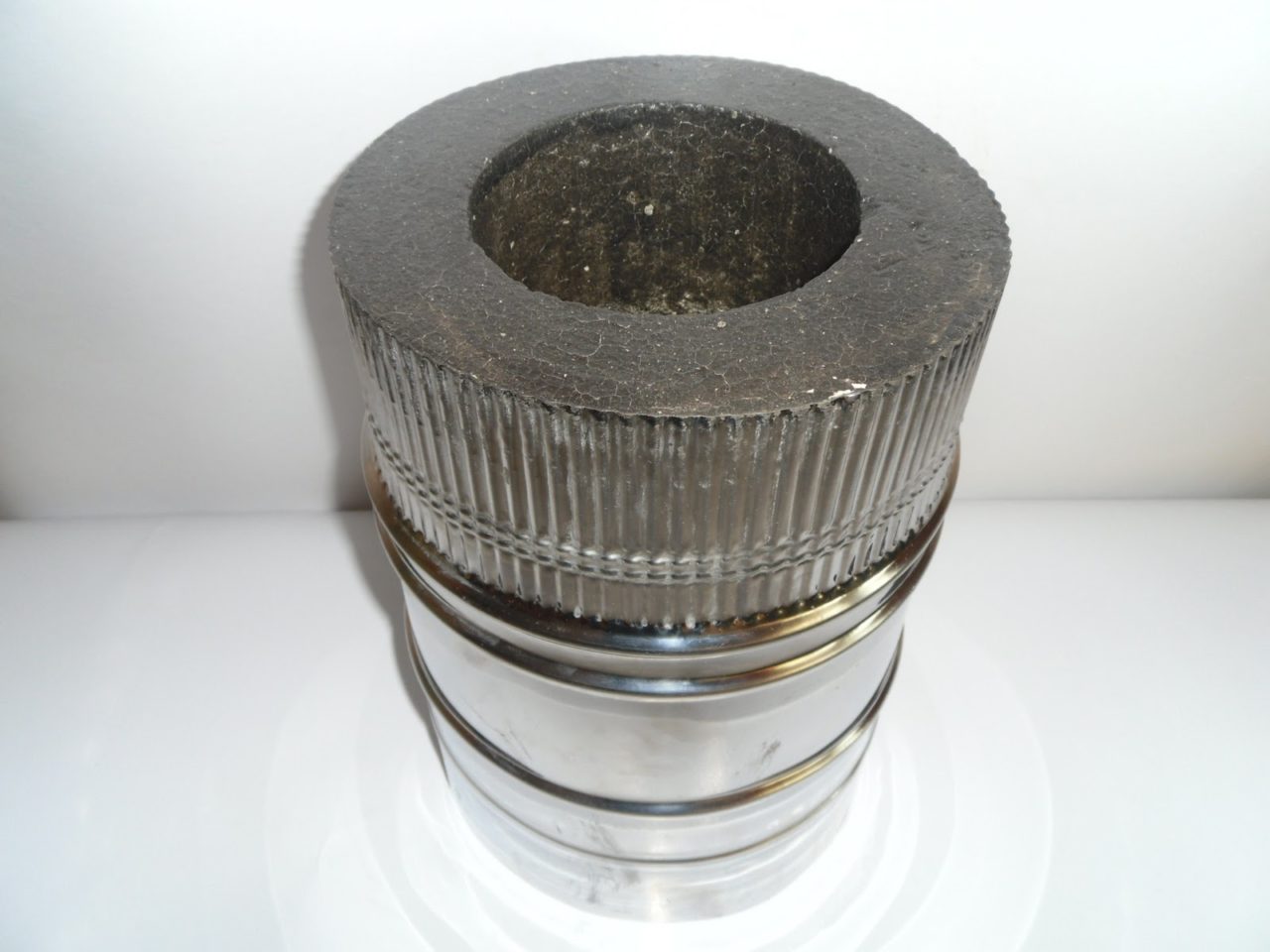
Other options
At the moment, there are other ways to equip the chimney:
- glass pipes a few years ago they would have been puzzled, but today their advantages are undeniable. Glass does not accumulate soot and soot, is easy to clean, inert to aggressive environments and can withstand high temperatures. But a glass chimney will be expensive, it is difficult to equip it, additional thermal insulation will be required, and the sealing of joints is complicated, therefore, until such an extravagant method has not gained distribution;

- polymer pipes - another novelty. They are made from a composite, which, according to the declared qualities, has a long service life, but can only be used at an exhaust gas temperature of not more than 2500C, i.e. its scope is limited geysers and boilers;

- concrete blocks and chimneys poured from concrete in some sources are called an alternative brick pipes. Professionals strongly criticize this option and recommend not playing with fire: concrete will not withstand severe temperature loads, and it is impossible to make a heat-resistant composition at home.
Finally, we note that before choosing a material for the chimney, you must choose a boiler or determine the design of the furnace. In addition, it is worth considering the design features of the building, and it is best to consider all the nuances of its future heating before starting the construction of the house. Calculations of the chimney channel for your safety are best left to a specialist.

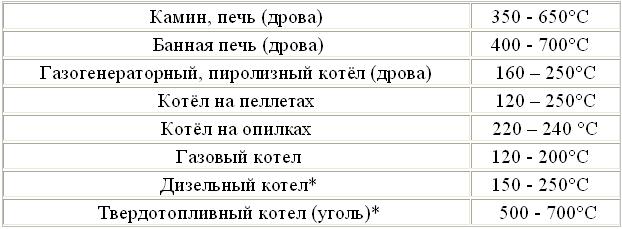
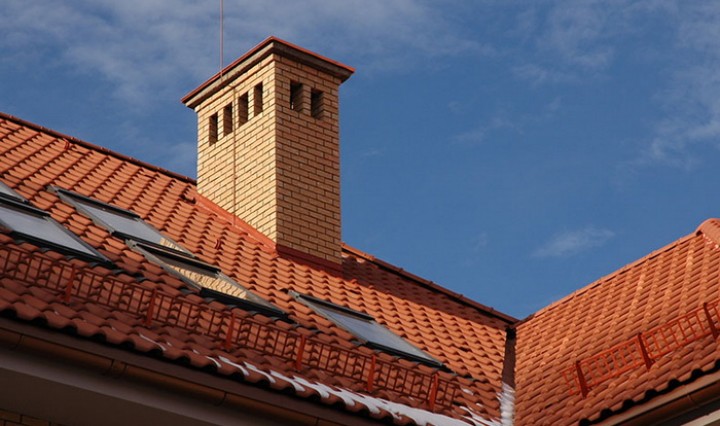
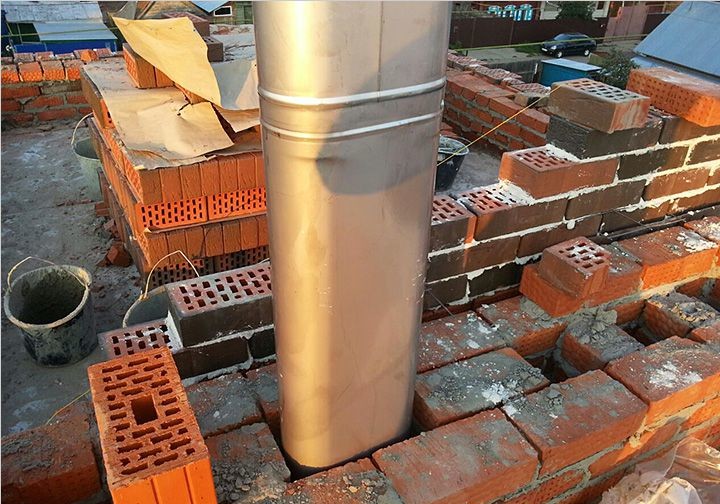
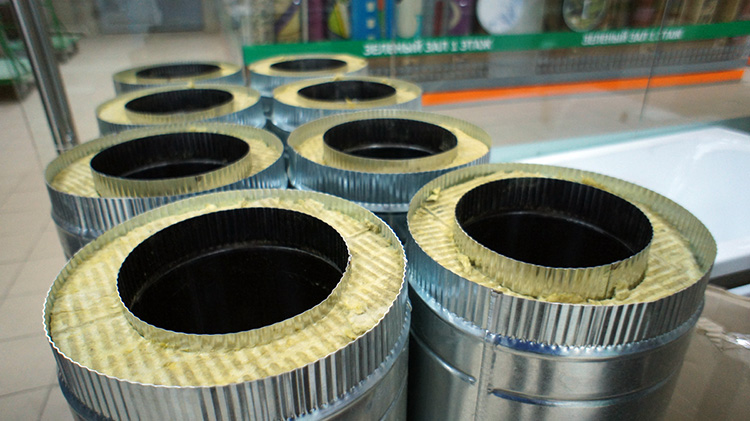
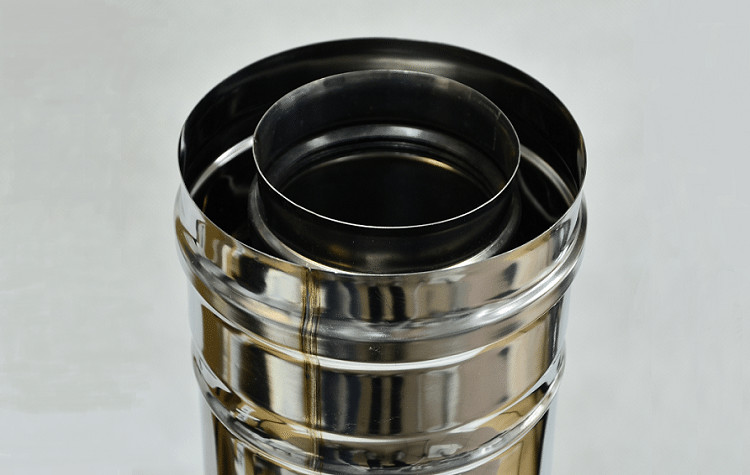
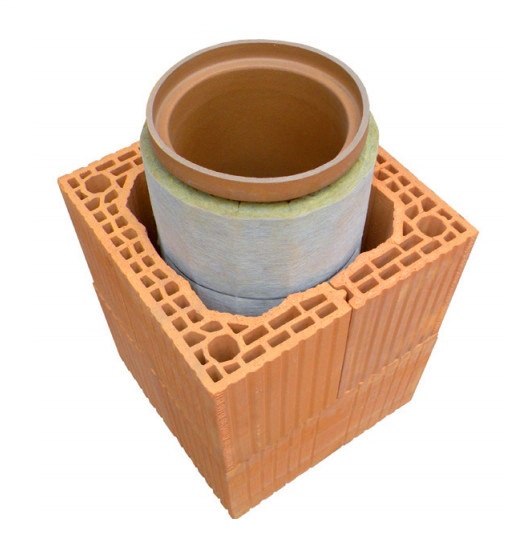
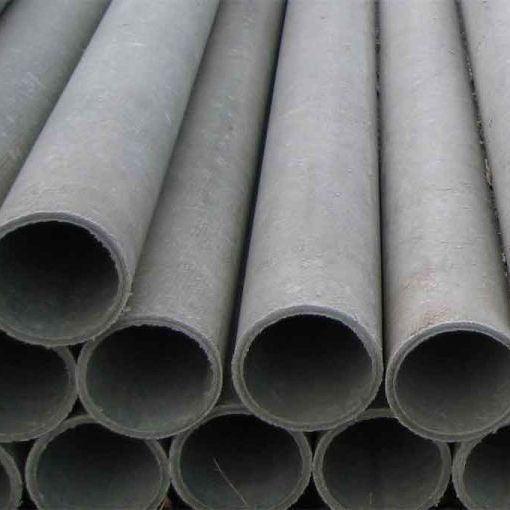
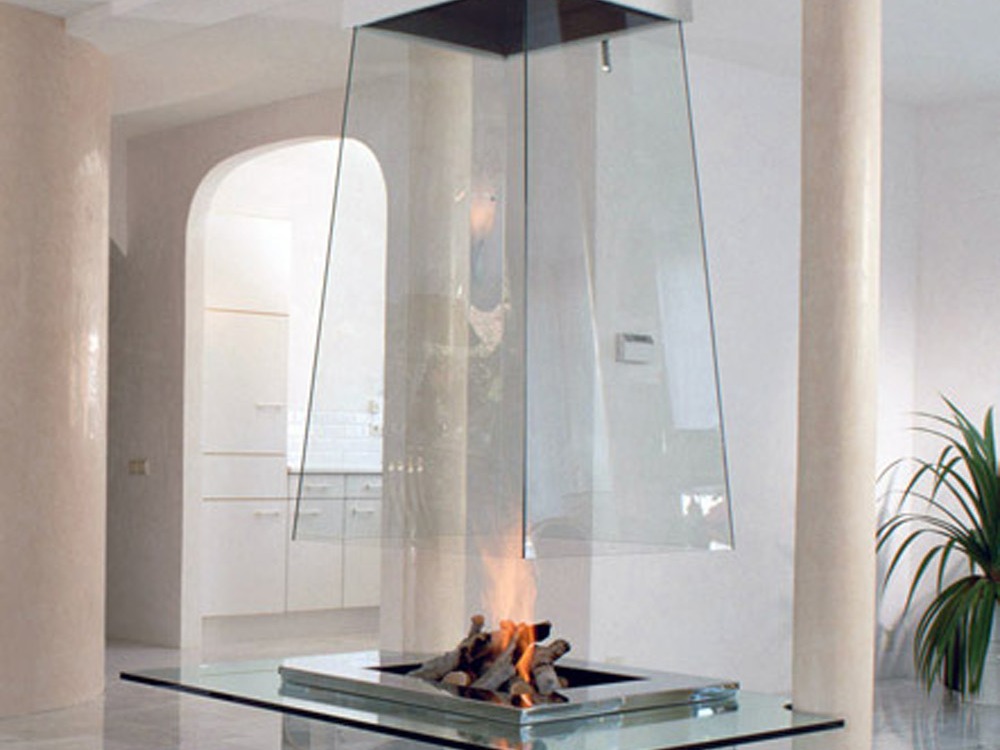
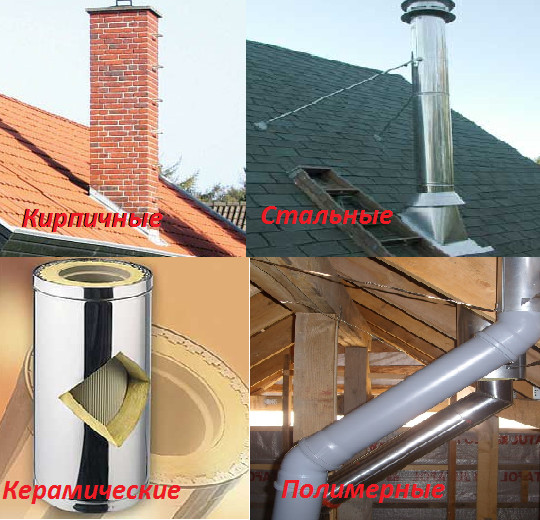
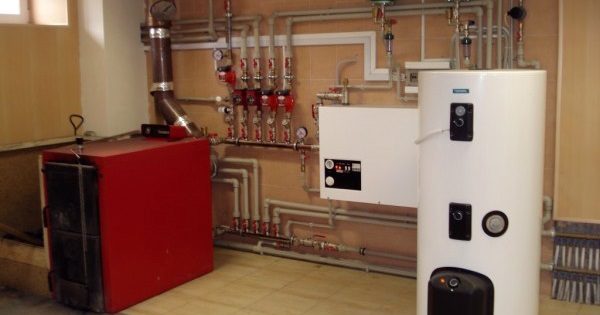
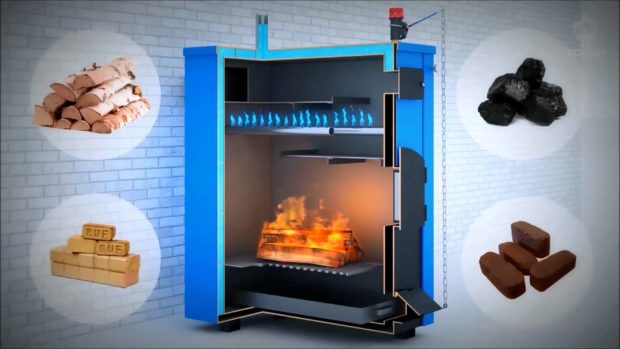
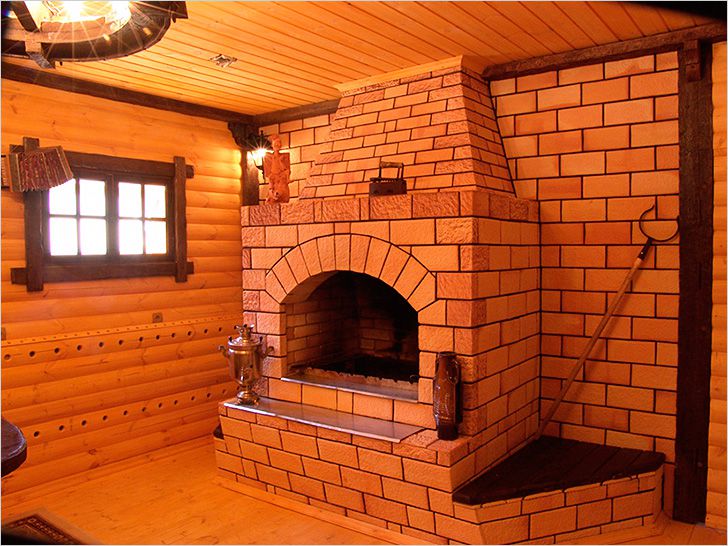
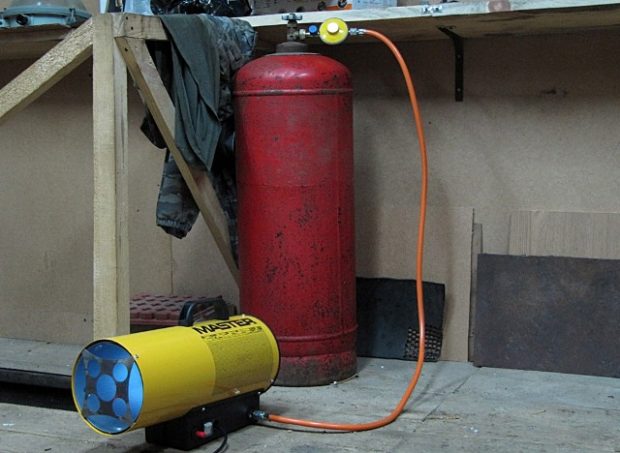
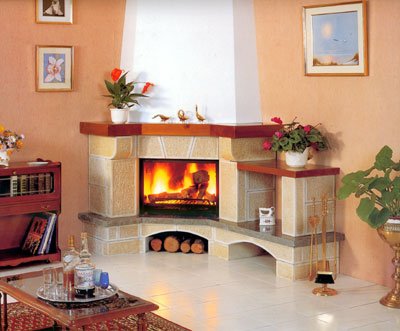
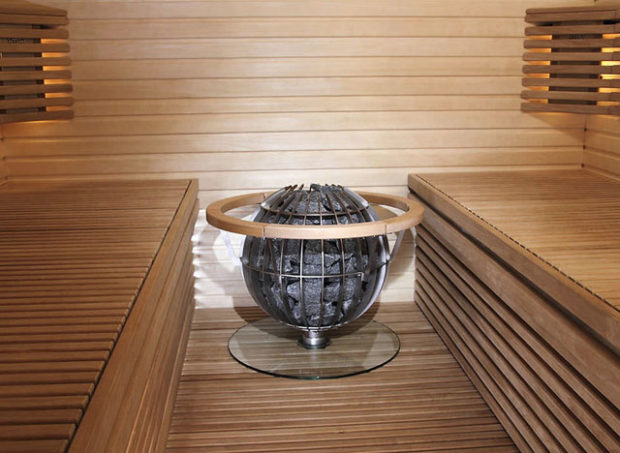
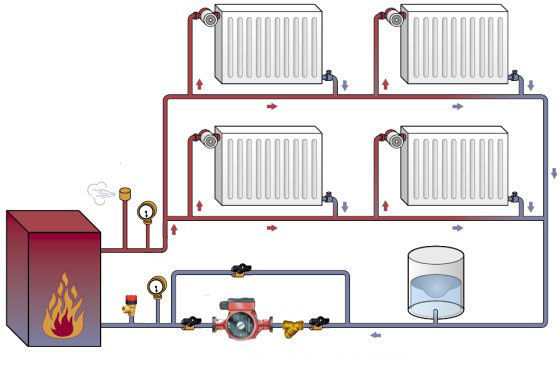
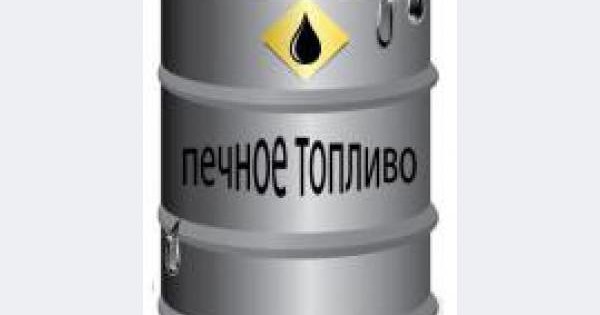
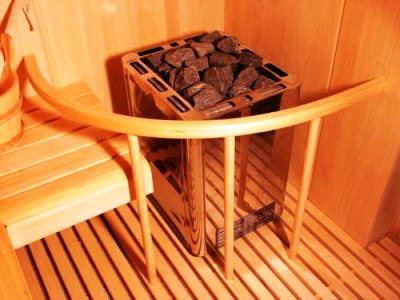

I took a lot of information from the article